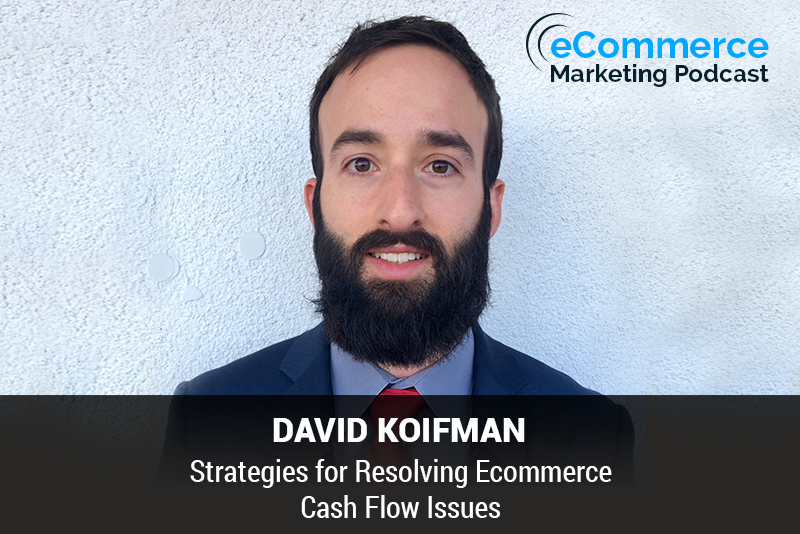
The eCommerce Marketing Podcast walks you through everything that goes into ecommerce marketing — from inbound marketing to paid advertising to conversions. Learn the strategies top marketing experts use to grow their businesses.
Marketing Strategies Revealed in this Episode:
- Reasons brands face cash flow issues
- How cash flow financing works
- Marketing strategies to prevent cash flow issues
- Brands that have come back from cash flow issues
- The do’s and don’ts with crowd financing

Episode Title: Strategies for Resolving Ecommerce Cash Flow Issues
Guest: David Koifman, Head of Growth at Kickfurther
In this episode of the eCommerce Marketing Podcast, Arlen Robinson chats with David Koifman, the Head of Growth at Kickfurther, a unique platform that helps Consumer Packaged Goods (CPG) businesses raise cash for inventory through crowd-financing. David delves into the common cash flow challenges faced by eCommerce brands, particularly during rapid growth phases, and explains how Kickfurther’s model addresses these issues by aligning funding with production and sales cycles.
Key Takeaways:
- Introduction to David and Kickfurther (00:00:50):
- David’s background in startups and his role at Kickfurther.
- Overview of Kickfurther’s unique crowd-financing model that helps businesses manage cash flow for inventory.
- Common Cash Flow Issues in E-commerce (00:04:20):
- Rapid growth as the main driver of cash flow problems.
- The burden of inventory costs alongside other business expenses.
- How Kickfurther Works (00:08:30):
- The process of vetting businesses and structuring deals based on production and sales timelines.
- Example scenario of funding a $100,000 inventory order with customized repayment schedules.
- Importance of Marketing and Cash Flow Management (00:14:00):
- Effective marketing can exacerbate cash flow issues by driving demand.
- Launching new products and seasonal spikes (e.g., holiday season) as additional challenges.
- Kickfurther’s Marketing Strategies (00:18:50):
- Success through happy customers and word-of-mouth referrals.
- Participation in trade shows and strong digital marketing efforts.
- Do’s and Don’ts of Crowd Financing (00:25:00):
- Be proactive and explore funding options before reaching a critical need.
- Leverage the ancillary benefits of Kickfurther’s community for additional business opportunities.
Guest Information:
- Name: David Koifman
- Position: Head of Growth at Kickfurther
- Contact:
- Website: Kickfurther
- Email: [email protected]











